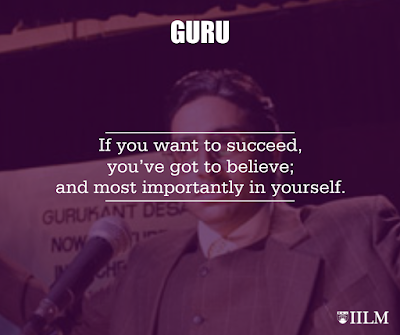2. Boundaries are created by man not nature
The gargantuan Iguazu Falls stretches across Argentina and Brazil, the Andes mountain ranges across seven South American countries, the Bosphorous river in Istanbul flows across the continents we call Asia and Europe, the Alps shared by the Swiss, Italy, France, Austria and Lichtenstein, the space that housed a basilica later housed a mosque in Hagia Sophia.
Travelling reminds us that boundaries are not natural and separation is a manifestation of need for man to own and control. It reminded me to let go of the boundaries sometimes, and view the world as one, the way it really is.
3. Perspective makes all the difference
There are two perspectives that I always like to experience when I visit new places. When I am in “it” and when I am afar, looking at “it”. It really does not matter what the “it” is. Sitting on a rock in Macchu Picchu, I marveled at the perfect stones set perfectly against each other. I thought of the people who might have lived there. But it’s only when I hiked up a nearby mountain and peeped at Machu Picchu from atop that I was blown away by the symmetry, the architecture and the presence of spirit influence.
I am mesmerized by what a little perspective can do. Sometimes, standing a little far from any situation can help us see things from a whole different light. The dots start to connect and the nuances take up a new meaning.
4. Darkness provides a whole different view
In most tourist places, there is always the quintessential “night tour” which gives us a view of the place when the street lights are on and the moon gets to finally shine. In some cases, the nightfall imparts incredible beauty which a sunny day could not elicit. The Eiffel tower looks more beautiful in the night, the twinkling lights making us weak in the knees.
The nooks and corners look more pronounced to me and I am able to dissolve the background and only focus on what’s at hand. Reminds me of the importance of darkness in our own lives. Times of despair and hardship bring forth a new understanding of character, not just of us but of others in our lives. I made a note to myself to be appreciative of darkness in life as a harbinger of realization of things about myself that I never would have known.
5. Sometimes doing nothing is the best activity
My favorite travel moments are when I stop taking pictures, posing for pictures, listening to the guide or any of the other sundry things. It’s when I just hit pause and do nothing. I just observe – the people, the clouds, and the ocean water bringing people back to shore.
The breathing slows down and there is a beautiful awareness of being alive. In life, we go from one activity to the other in a continuous pattern. Just going through the motions, doing important work, we forget we are alive. I pledge to hit pause and do nothing more often.
6. Travelling Light Makes It Easy to Maneuver Through Life
There was a time when I would max out the luggage capacity! There was a lot of focus on lugging the stuff around which would ruin some of my other experiences. Travelling light has changed the way I travel. It forces me to focus on what’s most important, use resources intelligently and reuse when I can. We lug around a lot in life as well and a lot of our life focuses on the stuff – the house, the car, and the works.
If we could cut out the superfluous and only kept the very essential, we may miss their presence in our lives at times but the space created for more experiences will definitely make up for it.
7. Nature is Incredibly Fit
Hiking, Trekking and Walking that’s how the world wants us to explore it. It’s almost like a rhetorical expression that giant mountains, fierce oceans and beautiful cities of the world have – “if you want to see the world, move it!” It’s the same for nature beings- birds flying across continents, animals hunting for a prey or butterflies possessing the perseverance to metamorphose.
We as nature beings are naturally fit, that’s our default. It’s the unnatural in our system and our disconnect with our nature self that brings dis-ease.
8. Money cannot Buy Sunsets
If you visit Christ the Redeemer or the Taj Mahal on a cloudy day, or you waited for the beautiful sunset at Santorini and a boisterous group of clouds to party right there with heavy rain, it’s very hard not to be disappointed. All the money in the world cannot move the clouds, stop rain or ensure a good sunset.
What has worked for me when I am hit by these moments? Cry a little and then ensure I have a great meal! These moments help remind me that when things are truly out of my control, the best course of action is to accept and move on. And move on to something that brings joy.
9. Small Efficiencies Create Important Space
I have long prided myself to be a whims person, which is a fancy way of saying “I don’t really plan”. I like to go with the flow and have a romantic view of the tapestry of life. Although, it comes to bite me often, I am not looking to change anytime soon as the rewards are greater for me, at least so far. But, but, travelling has taught me that a little bit of planning can deliver efficiencies that keep paying off.
Small things like storing all our travel plans on an application to keep the whole trip in perspective, checking in to hotels and airplanes prior gives us some extra breathing room when time is of essence, getting seats early so I am not sitting sandwiched between two people or weighing luggage beforehand so that I don’t have to move clothes around in front a queue.
Now I welcome small efficiencies in life that help make life easier to maneuver and more importantly create space and time for more important things like spending time with family and focusing on my joys.
10. There is no Problem that a Bit of Humor Cannot Solve
Travelling is not always hunky dory. The fun banter can sometimes turn into something more than just that. The usual differences around who will use the bathroom first to needing more time to relax vs sightsee or just the blame game around why we are lost in an unknown place, can spoil a long awaited vacation. But every time we felt like this is the end of a peaceful and adventurous travel, that all the planning and money is now a total waste; a streak of humor has saved the day.
An accidental joke, an unrequired smile or saying something terribly stupid has helped make lot of more pleasant memories than otherwise. A lesson for me to tap on humor’s shoulder when nothing else works. Goofiness is weapon to treasure in one’s armor.
11. Everyone has had Their Share
Every country has gone through its share of turbulent times and immense prosperity. Stories of triumph over evil and the perseverance to rise above all hardships exist in most countries I have travelled to so far. Civil wars, slavery, colonization, mass destruction, citizens standing up against bad governance – every country has a story.
And every citizen stands for the circumstances from their present and the past. Yes, we all appear different. But we are different because our journey to present time has been different. A reminder for me to not be judging too soon, no matter where I go or who I meet.
12. Weathering is an Asset
I have always felt drawn to the old and the vintage. Looking at mountains formed millions of years ago, waterfalls that have been at it for eternity, preserved colonies and houses that stand for the stories told or untold.
They have all faced extreme weathering through the ages. As I stared at the fairy chimneys of Cappadocia in Central Turkey, it was hard to imagine it’s a result of earthquakes, volcano eruptions and thousands of years of erosion. But something so unique and astonishing resulted from a seemingly harsh process. It reminds me as we go through life and its rigmarole, we will weather.
But in the weathering, there is something very beautiful forming that we are unaware of. It builds who we are and creates the crevices and the dents we need to truly stand out and become who we are meant to be.
13. Vacation is a State of Mind
I try my best to zone out during vacation but I have faux indulged in vacations where I took work with me or left myself at work. I would stare at a magnificent waterfall or a world heritage site but it’s the bullets on my PowerPoint deck that would surface up in my mind. The return from these vacations were most depressing because not only did I waste a ton of money and vacation days, I was drained because of guilt. It quickly became clear to me that vacation and relaxation are not synonymous. Vacations can well be a façade of living a balanced life but that helps no one.
The lesson for me is to know that vacation is not an exotic place or a process. It’s a state of mind when we are present and are in non-resistance. And it hit me that I don’t have to restrict myself to just two vacations a year; instead I can vacation two or three times a day!
14. Look Deeper at Happy Photographs
I remember when my husband and I climbed Wayna Picchu in Peru. It was almost 9000 feet of pure fright. No railings for support, my heart was in my mouth the whole time. Or trekking the Perito Moreno glacier for 4 hours. I tripped and fell, scraped my knees but kept walking. Both times, we ended the day with pictures of the two of us beaming with immense joy. When I look at those pictures now, I am reminded not only of the moment when the picture was taken but also the journey we took to get there.
The good moments and the not so good moments. It reminds me to look deeper into all happy pictures of mine or others. The smiles in a picture may carry many years of sacrifice, hard work and struggle. We rarely share pictures of those. A reminder that when I see a happy photograph, I should also think of the dimension of the journey it took to get there.
























